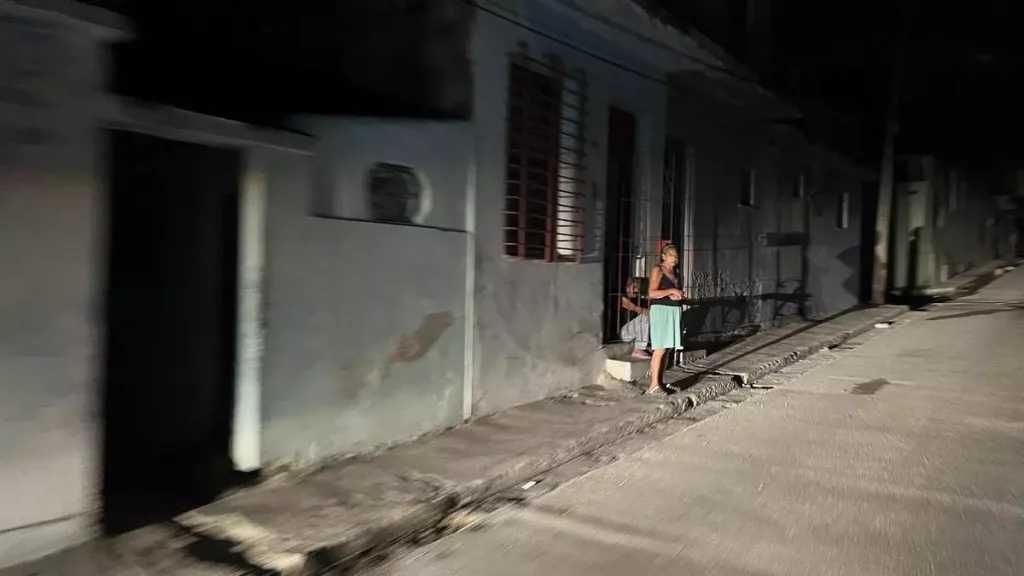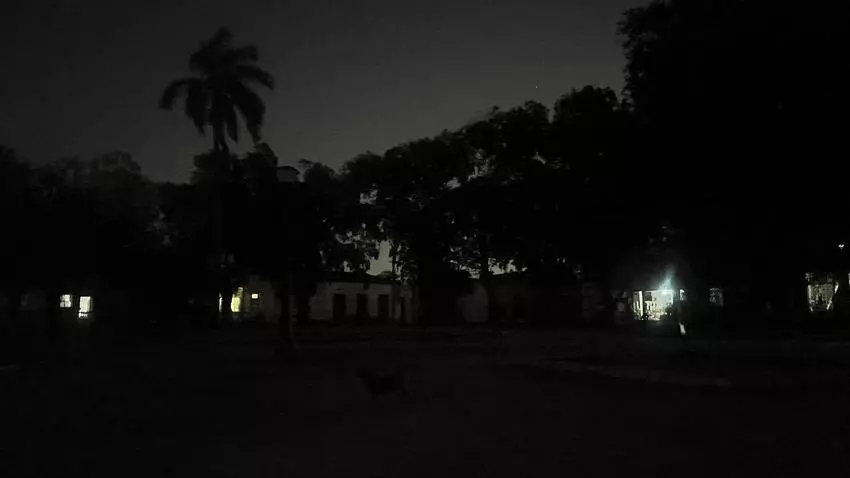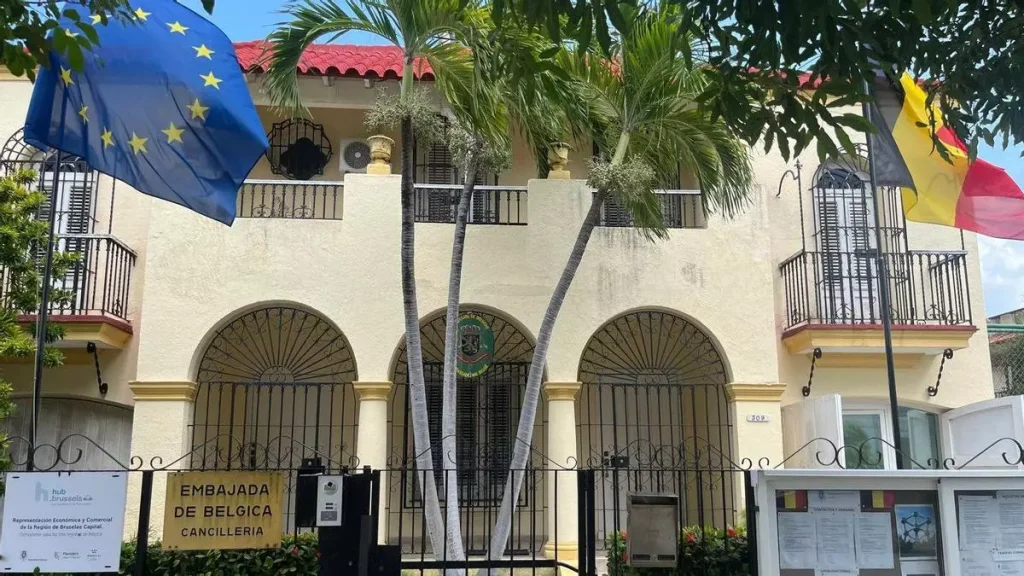The municipality of Mayabeque is experiencing one of its worst hygiene crises in decades

![]() 14ymedio, San José de las Lajas (Mayabeque), Julio César Contreras, November 22, 2025 — At five in the afternoon, when a reddish light falls on the crumbling buildings of the Military Housing Complex in San José de las Lajas (Mayabeque), the same ritual occurs: doors close, windows are boarded up with cardboard, and neighbours hurry inside before the swarm of mosquitoes takes over the neighbourhood. There’s no need to look at the clock. The buzzing announces it.
14ymedio, San José de las Lajas (Mayabeque), Julio César Contreras, November 22, 2025 — At five in the afternoon, when a reddish light falls on the crumbling buildings of the Military Housing Complex in San José de las Lajas (Mayabeque), the same ritual occurs: doors close, windows are boarded up with cardboard, and neighbours hurry inside before the swarm of mosquitoes takes over the neighbourhood. There’s no need to look at the clock. The buzzing announces it.
In the streets—if you can even call these shreds of torn-up asphalt streets—trash forms mountains that seem to have taken root. Plastic bags, used diapers, food scraps, pieces of wood, and even broken furniture accumulate for days and weeks. A dog rummages through the garbage as if searching for an improbable treasure, while a neighbour rides by on a bicycle, dodging green puddles where the stagnant water reeks of feces and neglect.
San José de las Lajas is experiencing one of its worst sanitation crises in decades, but in the Military Housing Complex—an aging complex with inadequate infrastructure—the situation has reached unbearable levels. According to the official press in Mayabeque province, the province is seeing an increase in cases of fever associated with chikungunya and dengue, which has prompted “intensive fumigation efforts” in several municipalities. But these “efforts” have not reached their area, according to residents.
“The press says they’re using bazookas all over the city, but they haven’t come to my building.”
Orlando, a mechanical engineer and father of two, speaks to 14ymedio with a weariness evident in his eyes. “The press says they’re using bazookas [mosquito sprayers] all over the city, but they haven’t come to my building. Everyone in my house got it: first the boys, then my wife, and finally me. This virus finished us off.” continue reading
The neighbourhood, built decades ago by small groups of low-ranking officers, has changed drastically. “There’s hardly anyone left from those days,” says Orlando. “The military left, and now the civilians who remain get a garbage truck from the municipal services every three or four months. They come, empty a container—if it hasn’t been stolen—and leave. The rest of the garbage is left lying on the ground. Nobody picks up anything.”
The images tell the whole story: an improvised garbage dump stretching for meters, an overflowing container, and buildings whose facades have long since lost their color. On the ground, water forms puddles that resemble breeding grounds for the Aedes aegypti mosquito. The breeding grounds, say the residents, aren’t just outside. “Rotten pipes, cisterns without lids, rooftop tanks full of filth… that’s where they breed,” explains Orlando.
The disease is advancing like a shadow. “At least five buildings are sick. In mine, almost all of them,” the engineer estimates. “It’s a fence you can’t escape.”
The elderly woman claims that the delegate of People’s Power “is just a figurehead.”
Lucía, a retired woman who lives alone, displays a mixture of annoyance and resignation. She has called the local Communist Party headquarters, the government, and the municipal and provincial Public Health departments. “The answer is always the same: they’ll fumigate when the fuel arrives. I’ve been hearing that since August.” Finally, sick and exhausted, she opted for a paid solution: hiring a fumigator herself.
“I found him on Revolico, 600 pesos per visit. He came two days in a row with the bazooka. He told me himself that first he had to fumigate two blocks that were his responsibility near the East Polyclinic, and then he could come here. You can see how we are. I spent 1,200 pesos out of the 3,200 in my checkbook.”
The elderly woman asserts that the representative of the People’s Power “is just a figurehead.” She says it without anger, with the voice of someone exhausted from waiting for official solutions that never come.
Meanwhile, life in the Military Housing Complex is a succession of fevers, joint pain, vomiting, and sleepless nights. Every day, news breaks of someone else who has fallen ill. Outside, the children no longer play. The adults walk as best they can, their steps almost robotic due to the joint pain caused by chikungunya, their eyes fixed on the ground.
“The country that boasts of its medical prowess can’t even handle a mosquito.”
Authorities, for their part, report on television a decrease in cases and “greater vector control.” In practice, the epidemic remains out of control. Cuba’s Ministry of Public Health reported this Friday that 6,597 new cases of fever were registered the previous day, in addition to confirming 847 cases of dengue and 753 of chikungunya in a single day. Meanwhile, Durán explained, in his daily television address, that chikungunya, the main illness affecting the country, has now reached a total of 31,513 cases, including both confirmed and suspected cases.
“You feel embarrassed for them,” says Lucía. “A country that boasts of its medical prowess can’t even handle a mosquito.”
In the distance, a woman hangs a sheet out onto the balcony to dry. The wind carries a sour smell from the garbage. A truck drives by without stopping. The dog starts rummaging through the trash again. The neighbourhood settles into its routine of survival.
In the Military District, the only thing that moves with constant frequency is disease.
Translated by GH
____________
COLLABORATE WITH OUR WORK: The 14ymedio team is committed to practicing serious journalism that reflects Cuba’s reality in all its depth. Thank you for joining us on this long journey. We invite you to continue supporting us by becoming a member of 14ymedio now. Together we can continue transforming journalism in Cuba.

















